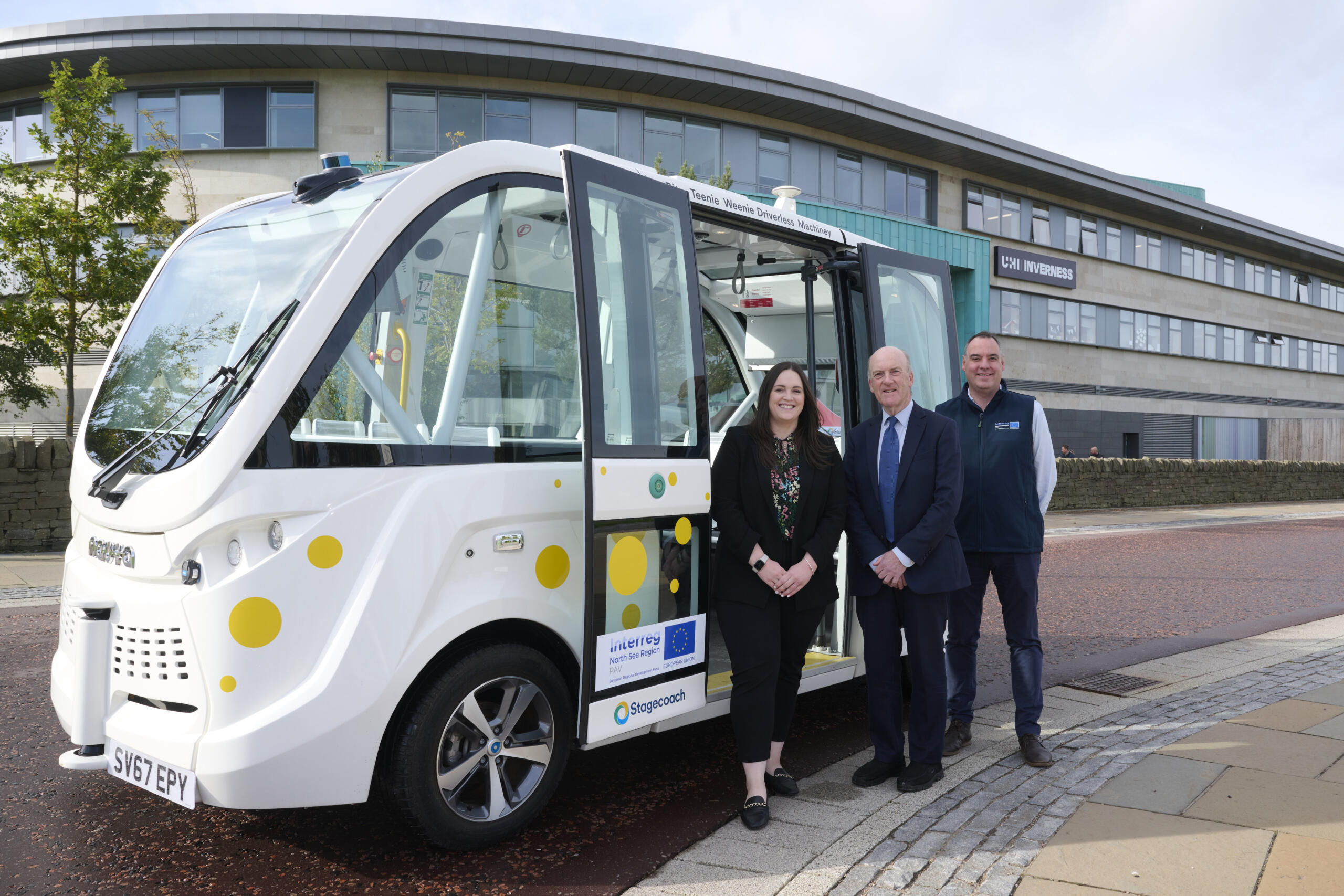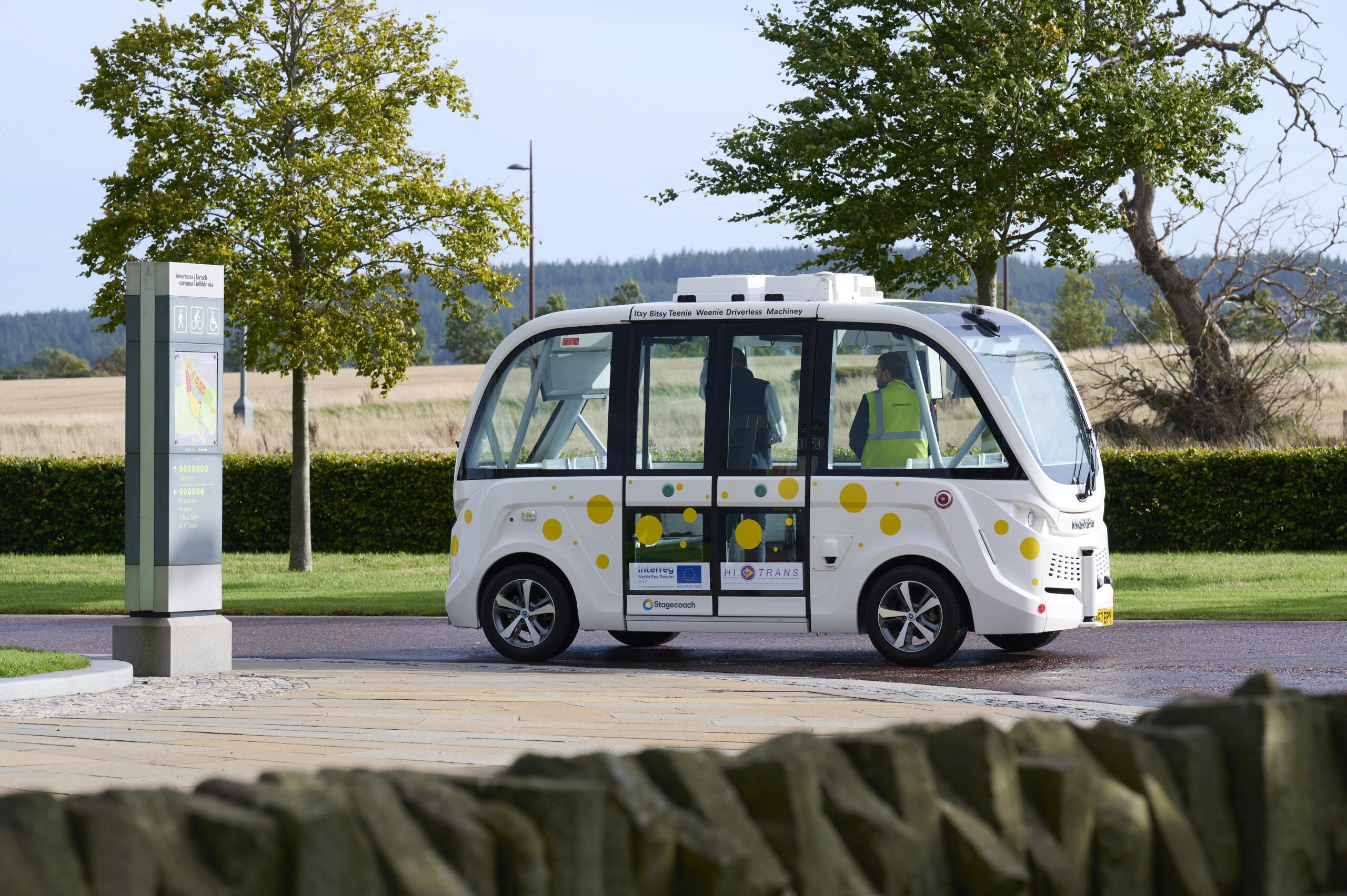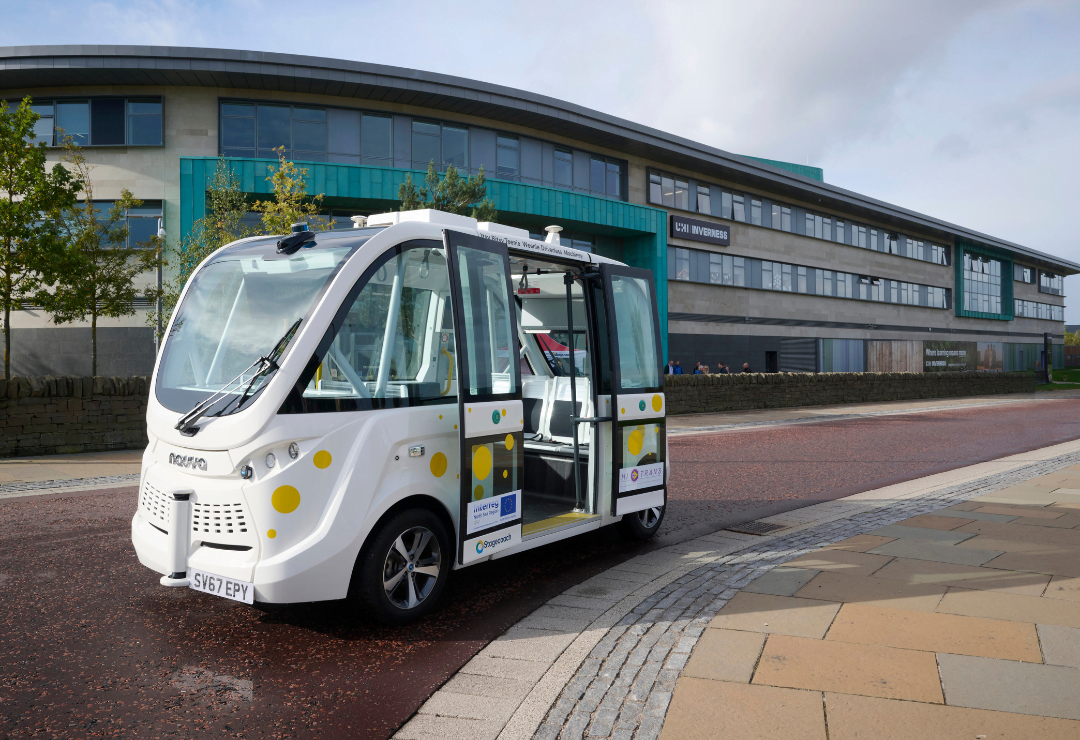PAV...E the Way
Autonomous vehicles (AVs) have the potential to revolutionise transport, but challenges still remain before they become a common sight on our streets. The PAV Interreg project has conducted successful AV pilots in small cities across Europe, including Hanover, Inverness, Varberg, and Almere, providing valuable insights into the challenges and opportunities of AV integration in urban and rural areas.
The transport industry is experiencing a significant shift with the rise of autonomous vehicles (AVs).
The possibility of fully self-driving vehicles on our roads becomes increasingly realistic as technology continues to advance. However, while the benefits of AVs are yet to be fully proven, including improved safety and reduced traffic congestion, there are still challenges to be faced before they become a common sight on our streets.
One challenge is the piloting of AVs in small cities, where the infrastructure and public acceptance may not be as established as in larger metropolitan areas. Nonetheless, successful AV pilots have taken place in small cities across Europe, including Hanover, Inverness, Varberg, and Almere, as part of the PAV Interreg project — a project that helps cities develop sustainable spatial planning strategies that include AVs.
Pilot Profiles
To understand the potential impact of AV technology on small and medium-sized cities (SMCs), it is valuable to take a closer look at the challenges and successes of the PAV pilots of Hanover, Inverness, Varberg, and Almere.
The pilot program in Hanover, Germany, took place on a 1 km route in Garbsen, connecting a tram stop with the Garbsen campus. The EasyMile AV shuttle mainly served students and staff at the university from Monday to Friday and operated on the road in live traffic with other road users. The AV shuttle ran in addition to the existing bus line.

Piloting AVs in Varberg. Credit: Varberg Kommun
The pilot program in Inverness, Scotland (UK), is taking place on a 3 km route on the Inverness Campus. The Navya AV Shuttle has a max capacity of 15 and operated from Monday to Saturday regularly, as well as an on-demand service during the evenings. The AV shuttle transports people around the Inverness Campus, connecting student accommodation and the university with the retail and business park.
The AV pilot in Varberg, Sweden, lasted for two weeks in June 2021. The route was 1 km long and went along the beach from a campsite to a parking lot used by surfers. The AV shuttle was only allowed to carry 5 passengers due to COVID-19 restrictions and was mainly used by tourists and curious Varberg citizens.
The Almere, the Netherlands, AV pilot is a virtual pilot program that sets up three different scenarios of integration of AVs in the public transport system of Pampus, a new part of the city currently under development. The virtual pilot sets up different simulations of how the transport system could look in Pampus with the integration of AVs, including scenarios with autonomous or semi-autonomous buses, AVs for first and last-mile transportation, and a completely demand-driven and autonomous transport system.
Learnings and challenges
The pilots conducted in various cities have provided valuable insights into the integration of AVs in public transport systems. One key learning is the importance of selecting appropriate routes for AV operation. The pilots in Hanover and Varberg, for example, focused on short routes connecting specific destinations, while the pilot in Inverness covered a larger area with a mix of student accommodation, university buildings, and retail parks. The pilot in Almere, while virtual, provides simulation results for three different scenarios for AV integration. These different approaches help showcase the diversity of needs for different regions.

Piloting Iverness' driverless bus. Credit: PAV project
One of the biggest challenges faced by all pilots was regulatory barriers due to the lack of uniform regulations governing the use of AVs, making it difficult for public authorities to create a legal framework for their operation. Additionally, as public perception towards AVs can be sceptical about their safety and reliability, the pilots showed that public education and awareness campaigns proved to be essential to promote the benefits of AVs and addressing any concerns that the public may have.
Technical limitations were also highlighted during the pilots, particularly in Varberg, where the AV shuttle was operational in very challenging surroundings. The area had heavy traffic due to ongoing renovation, and the interaction with bikes was extremely challenging. The sensors of the vehicle were also impacted, and the AV model used did not have cameras, which could have reduced the problem caused by flying sand from the nearby beach. These limitations demonstrate the need for ongoing investment in research and development to address these technical limitations in more advanced vehicles.
And now what? Looking into the future
When it comes to small and medium-sized cities, AV integration could bring even greater benefits due to their unique conformation and challenges. In particular, AVs can increase mobility and accessibility, especially for those with mobility issues, and improve the efficiency and reliability of public transport. However, to fully realise the potential of AVs in the EU, several challenges need addressing. The PAV pilots in Hanover, Inverness, Varberg, and Almere have provided valuable insights into these challenges and opportunities.

Piloting Iverness' driverless bus. Credit: PAV project
Improving AV technology and performance to integrate better with other traffic and reach higher speeds, developing demand-driven transport systems, and reducing AV costs to make them accessible to a broader range of consumers are among the challenges that need addressing. Additionally, small and medium-sized cities may face different challenges than larger ones. For instance, the infrastructure required to support AVs may be lacking in some areas, and affordability may be a concern for smaller communities. There may also be cultural or societal factors to consider, such as attitudes towards new technology.
Looking ahead, it will be crucial to tackle these challenges and ensure that AV benefits are accessible to all, regardless of community size. This will require continued investment in technology, infrastructure, and stakeholder engagement. In conclusion, the pilots have shown promising results, and ultimately, AV integration has the potential to transform transportation in small and medium-sized cities. Nevertheless, it will take a collaborative effort from stakeholders across the EU to make this vision a reality.
Click here to read the article in its original format.
About the author:
Laura Babío is a Project Manager at POLIS Network. She is involved in several EU-funded projects, such as PAV, MOBI-MIX, Dynaxibility4CE, MobiDataLab and e-smartec and works on new mobility trends such as MaaS, CCAM and UVAR. She actively co-coordinates the activities of the Working Group on Mobility & Traffic Efficiency and leads the newly formed Just Transition Taskforce.
